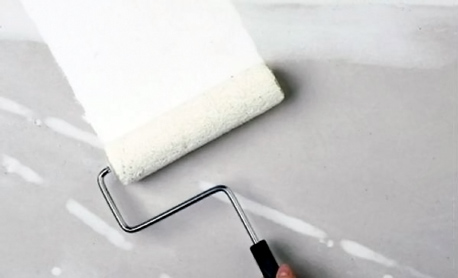Benefits of Using Primer Before Painting
One of the most well-known pieces of advice you may hear before completing your interior or exterior painting job is that you should use a paint primer before anything. But what really is primer anyway? Primer is an undercoat that is usually white or lightly colored, that you paint onto a surface before the normal, pigmented paint that you desire for your walls.
Initially, it may seem like using a primer may be an unnecessary step to your interior painting or exterior painting process. It is an additional cost, and takes up more time to get the job done with those extra layers. Even though painting your surface multiple times even before your color choice might seem useless, there are actually many advantages to the primer that make it an essential part of your painting process.
Stronger Paint Adhesion
The adhesion of a surface varies based on what the surface is made of, and how old it is. That adhesion plays a large part into how well your wall paint will stick on to the surface, and how long the fresh paint will stay on the wall. Using primer before your paint color creates a stronger and more tenacious surface for your paint to cling to. This is especially important when your walls are made of material that does not react well to the average house paint. There are different types of paint primer for various types of surfaces and paints, so it is beneficial to conduct research to pick the primer that is best for you.
Better Paint Color and Texture
Sometimes when you paint a new color over the old one, the old one can begin to show through, especially if the new color is lighter. Even multiple layers of the new paint might not be enough to completely cover up the old shades. Since primer’s are usually white, using a couple layers of it in between your old and new color gives you the ability to mask that initial color, no matter how dark it was. You will also need a primer if you are switching the texture of your interior wall paint, such as from flat to glossy. Your new color will also look more vibrant and dynamic, and the texture of your wall will be consistent.
It Hides Imperfections on Your Walls
Many different factors can create stains on your walls, such as water damage, discoloration from age, and splattered substances. Using a primer on your walls can disguise all of the stains, allowing the added layers of paint to fully cover them up even before your paint color is on. Primer is also beneficial when it comes to hiding dents and holes in your wall, especially when you patch them up with drywall or another material. Spot prime these touched-up areas to smooth them over, then proceed to cover your entire walls with the primer.
Saves You Money and Time
Buying just a container or two of primer before conducting your interior or exterior paint job can save you extra money and time down the road. If you choose to skip the primer step, your original wall color might be noticeable through your new color, or blemishes on your wall may be seen after your painting is complete. This will lead to another trip to the store to pick up material to patch up the holes or dents, and extra paint gallons to add supplementary coats on to your walls. A gallon of primer is less expensive than a gallon of paint, so making the decision to prime your walls first is a no-brainer.
Creates A Longer Life Span for Your Paint Job
Using a primer helps to sustain your paint job, and will make it last an exceptionally longer amount of time than if you did not use it. The top layer of paint will be less likely to crack, peel, or bubble if there are protective layers of primer in between the new and old layers that will have to be worn down first. Your new paint color will be that beautiful and lively color for a longer period of time as well with the use of a primer, and will not fade as quickly because of the added layers. .

